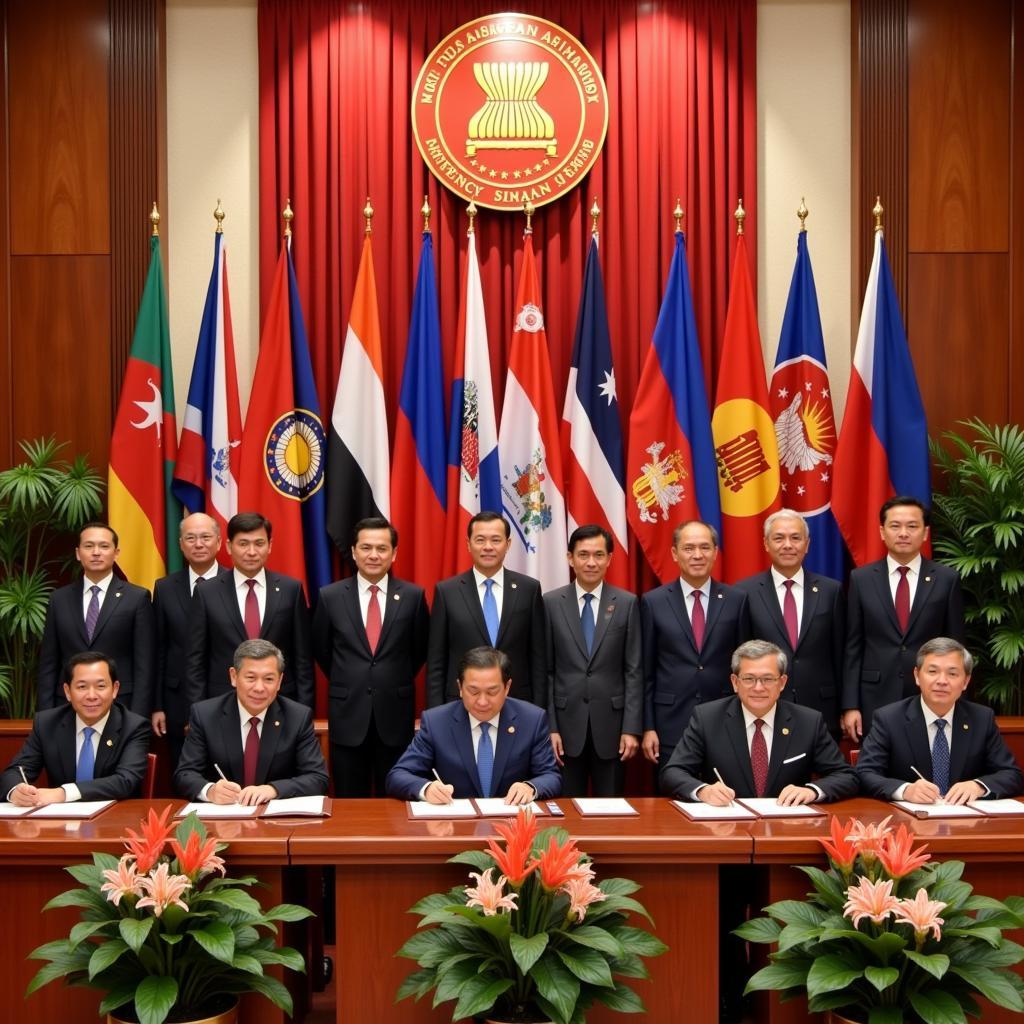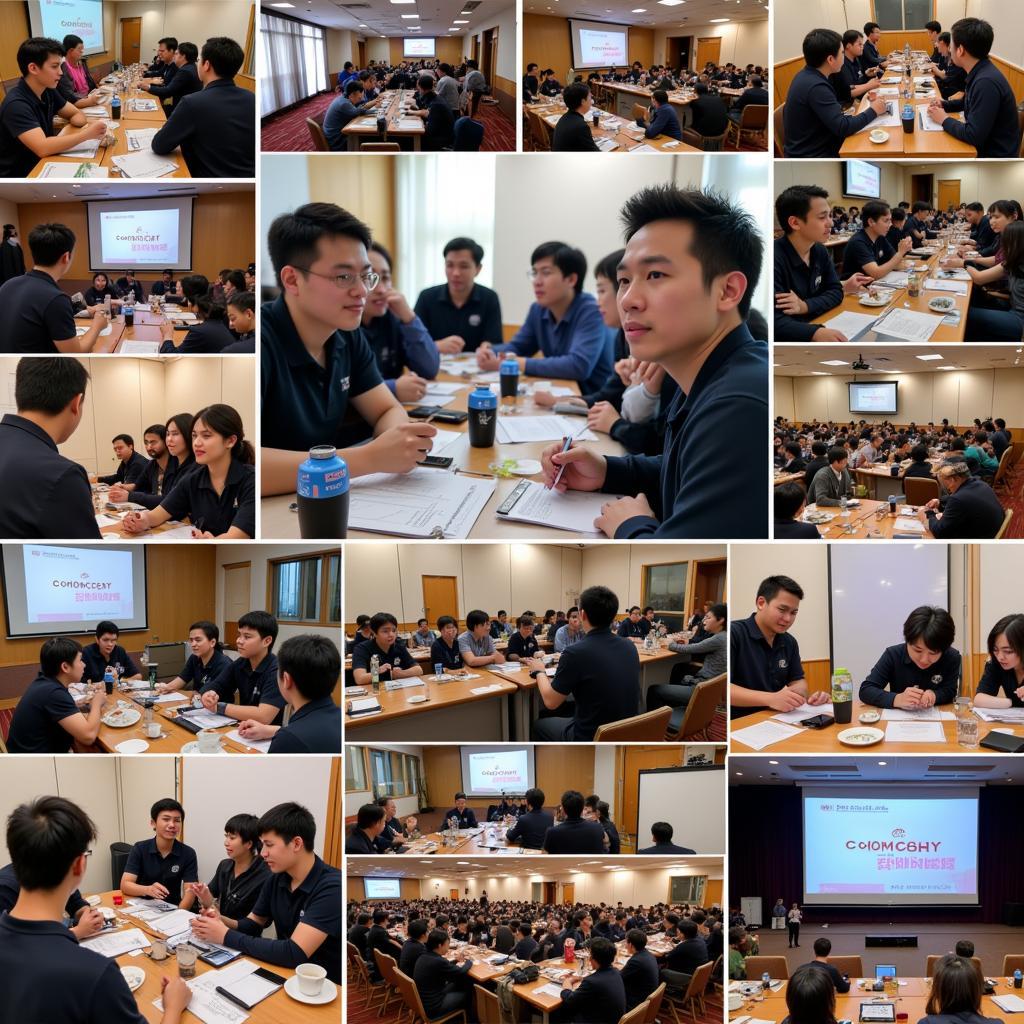The ASEAN Constitution, ratified in 2008, marked a pivotal step in the evolution of the Association of Southeast Asian Nations (ASEAN). This foundational document provides a legal framework, solidifying ASEAN’s commitment to regional peace, stability, and cooperation. Understanding the core principles and objectives enshrined within the ASEAN Constitution is crucial for anyone seeking to engage with this dynamic region.
From Declaration to Constitution: A Historical Perspective
Before the ASEAN Constitution, the 1967 Bangkok Declaration served as the primary guiding document. This declaration outlined the core principles of cooperation and amity among member states. However, as ASEAN grew in membership and scope, the need for a more robust and legally binding framework became evident.
The ASEAN Constitution, adopted at the 14th ASEAN Summit in Singapore, marked a transition from a loosely structured entity to a rules-based organization. This shift reflects ASEAN’s ambition to solidify its position on the global stage and strengthen its ability to address complex regional challenges.
 ASEAN Summit Signing
ASEAN Summit Signing
Key Features of the ASEAN Constitution
The ASEAN Constitution articulates several key features that underpin the organization’s vision and operational mechanisms:
- Legal Personality: Granting ASEAN legal personality enabled it to engage in international agreements and treaties, enhancing its status as a regional bloc.
- Enhanced Institutional Framework: The Constitution outlines the roles and responsibilities of key ASEAN organs, fostering greater coordination and efficiency in decision-making processes.
- Rule of Law and Good Governance: Upholding the rule of law, good governance, democracy, and constitutional government are central tenets of the ASEAN Constitution, promoting stability and accountability within the region.
Pillars of ASEAN Cooperation: A Closer Look
The ASEAN Constitution reaffirms the three pillars of cooperation initially outlined in the 1997 ASEAN Vision 2020:
1. Political-Security Community: This pillar focuses on promoting peace and security in the region through dialogue, confidence-building measures, and conflict prevention mechanisms.
2. Economic Community: The ASEAN Economic Community (AEC) aims to establish a single market and production base, promoting free flow of goods, services, investments, and skilled labor within the region.
3. Socio-Cultural Community: This pillar recognizes the importance of addressing social and cultural issues, fostering a sense of community and shared identity among ASEAN citizens.
 ASEAN Community Pillars
ASEAN Community Pillars
The ASEAN Charter and Human Rights
The ASEAN Charter has faced scrutiny regarding its commitment to human rights. While the Charter includes provisions promoting human rights and fundamental freedoms, critics argue that these commitments lack enforcement mechanisms. The absence of a dedicated human rights body within the ASEAN framework further complicates this issue.
“The challenge for ASEAN is to translate the principles enshrined in the Charter into tangible actions that improve the lives of everyday citizens,” notes Dr. Maya Jayasuriya, a prominent scholar of Southeast Asian politics. “Addressing the human rights deficit remains a crucial, albeit complex, task for the organization.”
The Way Forward: Challenges and Opportunities
The ASEAN Constitution, while a significant milestone, represents an ongoing process. ASEAN faces ongoing challenges, including:
- Balancing National Interests: Reconciling the diverse national interests of its member states while pursuing regional objectives remains a delicate balancing act.
- Implementation and Enforcement: Translating the principles of the Constitution into concrete actions and ensuring effective implementation across all member states is crucial for its long-term success.
- Responding to Emerging Threats: ASEAN must adapt to a rapidly evolving regional and global landscape, addressing new security challenges such as transnational crime, cybersecurity threats, and climate change.
Despite these challenges, the ASEAN Constitution provides a solid foundation for continued growth and integration. As ASEAN navigates the complexities of the 21st century, its commitment to dialogue, cooperation, and a rules-based order will be instrumental in shaping a peaceful and prosperous Southeast Asia.
FAQ
1. When was the ASEAN Constitution ratified?
The ASEAN Constitution was ratified on December 15, 2008.
2. What are the three pillars of ASEAN cooperation?
The three pillars are: Political-Security Community, Economic Community, and Socio-Cultural Community.
3. Why is the ASEAN Constitution important?
The ASEAN Constitution provides a legal framework for the organization, enhances its institutional structure, and reaffirms its commitment to regional peace, stability, and cooperation.
4. What are some of the challenges facing ASEAN?
Balancing national interests, ensuring effective implementation of agreements, and responding to emerging regional and global threats are some of the challenges ASEAN faces.
Need More Information?
For a deeper understanding of ASEAN and its initiatives, explore these related articles:
Do you have other questions about the ASEAN Constitution or Southeast Asia? Contact us at:
Phone: 0369020373
Email: [email protected]
Address: Thôn Ngọc Liễn, Hiệp Hòa, Bắc Giang, Việt Nam
Our dedicated customer support team is available 24/7 to assist you.


